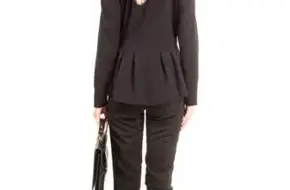Here’s your travel guide content, focused exclusively on the requested topic and format:
Let’s cut to the chase: mastering the Beijing Subway is your key to unlocking the city efficiently, affordably, and surprisingly easily. First things first: grab an IC Card (Yikatong) from any station booth – load it with credit and tap in/out effortlessly, saving you queues. Download the official Beijing Subway App or Baidu Maps/Apple Maps beforehand; they offer real-time navigation, station layouts (crucial for massive interchanges!), and live train times in English. Finally, timing matters: avoid the intense rush hour madness (roughly 7:30-9:30 AM & 5:00-7:00 PM weekdays) for a much smoother ride. Plan journeys around major interchange stations and utilize express airport trains. It’s simpler than it looks!
Getting comfortable involves a few cultural quirks. Stations and trains are generally well-signed in pinyin (Romanized Chinese) and English, but direction is king! Trains run on specific lines towards terminal stations – know your end-direction name (e.g., Pingguoyuan on Line 1 or Tiantongyuan North on Line 5). Security checks at every entrance are standard; just pop bags on the X-ray belt. While escalators are plentiful, be prepared for stairs at some older stations. Embrace the efficiency – it’s the fastest way across this sprawling metropolis!
Which Beijing Subway Routes Matter Most For Tourists?
Knowing the key Beijing Subway lines transforms sightseeing. Line 1 (red) and its branch Line 1 Batong are your lifelines east-west past Tiananmen Square, the Forbidden City (Wangfujing/Dongdan exits), and Shopping districts. Line 2 (blue), the loop line, circles central Beijing, hitting major hubs like Xizhimen, Dongzhimen, and Qianmen near the Square. Line 8 (green) is essential for the Olympic Park (Bird’s Nest/Water Cube). Line 6 (yellow) runs north-south through the Gulou Hutongs and embassy areas. The Airport Express is a no-brainer link to PEK. Here’s a quick cheat sheet:
| Beijing Subway Line | Color | Key Tourist Spots Served | Major Interchange Stations | Pro Tip |
|---|---|---|---|---|
| Line 1 / Batong | Red | Tiananmen Square, Forbidden City (E), Wangfujing St. | Xidan, Guomao, Sihui East (Batong) | Very busy! Avoid peak times if possible |
| Line 2 | Blue | Qianmen (T. Square hutongs), Lama Temple, Drum Tower | All major ring road hubs | Circle line - great for connections |
| Line 8 | Green | Olympic Park (Bird’s Nest, Water Cube) | Olympic Sports Center, Beitucheng | Connects south to Nanluoguxiang hutong |
| Line 6 | Yellow | Nanluoguxiang Hutong, Beihai Park (N), Chaoyang CBD | Dongsi, Chaoyangmen, Jintailu | Less crowded north-south option |
| Airport Express | Grey | Beijing Capital Airport (PEK) Terminal 2 & 3 | Dongzhimen (connect to Line 2⁄13), Sanyuanqiao | Buy single ticket or use IC Card! |
How Can Digital Tools Simplify My Beijing Subway Experience?
Never underestimate your smartphone! The official Beijing Subway App (look for the logo) is your absolute best friend. It provides the official map, real-time train arrivals (crucial!), detailed station exit maps showing landmarks, and even fare calculators. It works offline once downloaded. Baidu Maps or Apple Maps (Google Maps is unreliable in China) are essential for door-to-door journey planning; they incorporate the Beijing Subway perfectly. Input your hotel and destination, choose the public transport option, and follow the clear step-by-step instructions, including exactly which exit letters (A, B, C, D) to use. Enable offline Beijing maps for backup. These tools turn navigating Beijing into a game-changer.
What Should I Know About Beijing Subway Peak Hours & Crowds?
Brace yourself, rush hour (especially weekday mornings 7:30-9:30 AM and evenings 5:00-7:00 PM) on popular lines like 1, 2, 4, 5, 6, and 10 can be intense. Think packed trains and bustling platforms. If your schedule is flexible, travel outside these windows for a vastly more comfortable experience. Major interchange stations like Xizhimen, Guomao, and Dongzhimen are complex labyrinths during peak times – allow extra minutes (at least 10-15!) to navigate between lines. Pay attention to platform markings indicating where doors open and potential queue lines. Stay aware of your belongings in the crowds. If possible, avoid transferring at the busiest hubs during peak chaos – sometimes a slightly longer, less complex route is less stressful.
Are There Unspoken Rules On The Beijing Subway?
While efficient, there’s definitely Beijing Subway etiquette! Queuing is expected, especially marked lines on platforms. Let passengers exit before boarding – pushing is frowned upon. Priority seats are reserved for elderly, pregnant, disabled, or passengers with young children; offer yours if needed. Keep voices down; loud conversations or calls are considered rude. Eating and drinking (except water) are prohibited onboard trains – save the snacks! Large luggage is fine, but try to keep it out of aisles. Be mindful of personal space, though it’s often limited. Following these makes the journey smoother for everyone.
What Key Destinations Can I Access Via The Beijing Subway?
The beauty of the Beijing Subway is how it puts almost everything within reach! Beyond the obvious (Forbidden City - Line 1 Dongdan/Wangfujing; Tiananmen Square - Line 1 Tiananmen East/West or Qianmen on Line 2; Summer Palace - Line 4 Beigongmen/Xiyuan; Temple of Heaven - Line 5 Tiantan Dongmen), explore deeper. Use Line 6 or 8 for Nanluoguxiang’s hutongs. Line 5 goes direct to the fascinating Lama Temple (Yonghegong station). Line 8 takes you effortlessly to the Olympic Park. For trendy Sanlitun bars/shopping, hop off at Tuanjiehu (Line 10) or Agricultural Exhibition Center (Line 10). 798 Art District? Ride Line 14 to Jiangtai, then a short taxi/bike. The Beijing Subway truly unlocks the city’s layers. Enjoy the ride!

